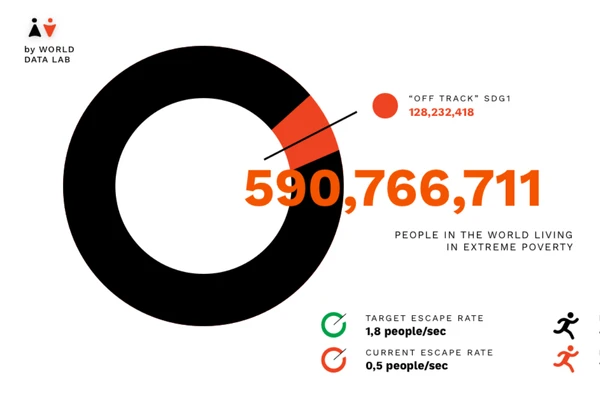India has reduced ‘extreme poverty’ to under 3% of its population, a noteworthy achievement towards the first of the 17 Sustainable Development Goals (SDG) set by the United Nations for 2030.
About World Poverty Clock:
- The World Poverty Clock offers real-time poverty estimates until 2030 for almost every country, tracking progress toward the UN’s first Sustainable Development Goal (SDG) of Ending Extreme Poverty.
- It is funded by the International Fund for Agricultural Development (IFAD) and the Federal Ministry for Economic Cooperation and Development of Germany.
- The Clock shows the number of people living in extreme poverty worldwide, disaggregated by age, gender and rural/urban location.
Escape rate:
- The escape rate calculates the current rate of poverty reduction in the world.
- Every second, individuals either escape poverty or fall into it, and the Clock tracks these changes in real-time.
Recent findings:
- The Clock uses a $2.15 a day income threshold for its findings.
- Consequently, in 2024, nearly 3.44 crore people are living in extreme poverty, down from 4.69 crore in 2022.
- As a percentage of the total population, the number of people in extreme poverty has decreased from 3.3% in 2022 to 2.4%, marking another significant indicator in the battle against poverty.
Other key facts:
- The World Bank employs poverty thresholds to aggregate and compare poverty rates globally.
- The $2.15 a day poverty line, known as the extreme poverty line, reflects the value of national poverty lines in some of the poorest countries.
- Additionally, poverty is tracked at $3.65 a day, representing lower-middle-income countries, and $6.85 a day, typical for upper-middle-income countries, providing a broader perspective.
International poverty line of $2.15 a day:
- The international poverty line of $2.15 a day is utilized to measure poverty and monitor progress towards achieving the World Bank target of reducing the proportion of people in extreme poverty to below 3% by 2030.
- The even more ambitious Sustainable Development Goal (SDG) target 1.1 aims for all countries, regions, and groups within countries to achieve zero poverty at the same international poverty line by 2030.
Ref:Source
| UPSC IAS Preparation Resources | |
| Current Affairs Analysis | Topperspedia |
| GS Shots | Simply Explained |
| Daily Flash Cards | Daily Quiz |



